Renault Captur vs Renault Clio – Differences & prices compared
Compare performance, boot space, consumption and price in one view.
Find out now: which car is the better choice for you – Renault Captur or Renault Clio?
The Renault Captur (SUV) comes with a Petrol MHEV, LPG, Petrol or Full Hybrid engine and Manuel or Automatic transmission. In comparison, the Renault Clio (Hatchback) features a Full Hybrid, Petrol or LPG engine with Automatic or Manuel transmission.
When it comes to boot capacity, the Renault Captur offers 422 L, while the Renault Clio provides 391 L – depending on how much space you need. If you’re looking for more power, decide whether the 158 HP of the Renault Captur or the 143 HP of the Renault Clio suits your needs better.
In terms of consumption, the values are 4.50 L per 100 km for the Renault Captur, and 4.30 L for the Renault Clio.
Price-wise, the Renault Captur starts at 20400 £, while the Renault Clio is available from 16600 £. Compare all the details and find out which model fits your lifestyle best!
In the ever-popular Renault Captur versus Renault Clio showdown, drivers can expect distinct advantages in both compact versatility and sporty handling. The Captur shines with its higher driving position and spacious interior, making it ideal for urban adventures and family outings. Meanwhile, the Clio impresses with its agile performance and stylish design, catering to those who prioritize a dynamic driving experience.
Renault Captur
The Renault Captur is a compact SUV that combines stylish design with practical functionality, making it a popular choice for urban drivers. Its interior offers a versatile and comfortable space, featuring high-quality materials and modern technology. On the road, the Captur delivers a smooth and efficient driving experience, perfect for both city commutes and weekend adventures.
details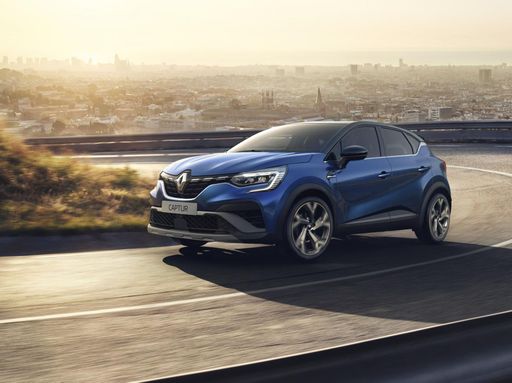 @ renault-presse.de
@ renault-presse.de
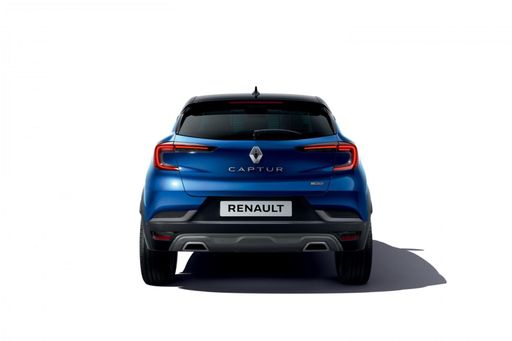 @ renault-presse.de
@ renault-presse.de
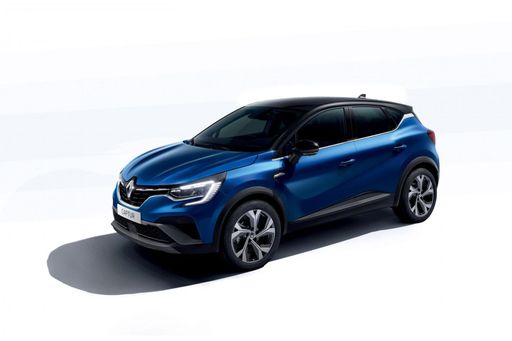 @ renault-presse.de
@ renault-presse.de
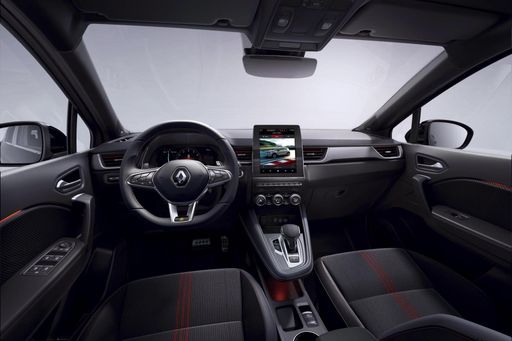 @ renault-presse.de
@ renault-presse.de
Renault Clio
The Renault Clio continues to impress with its sleek design and agile handling, making it a standout choice in the compact car segment. Inside, it offers a surprisingly spacious and comfortable cabin, crafted with high-quality materials that enhance the driving experience. Its fuel efficiency and reliable performance make it an attractive option for both city commuting and longer journeys.
details @ renault-presse.de
@ renault-presse.de
 @ renault-presse.de
@ renault-presse.de
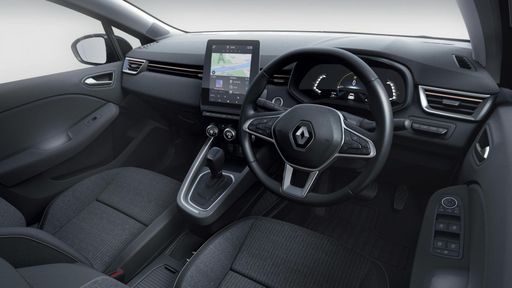 @ renault-presse.de
@ renault-presse.de
Renault Captur vs Renault Clio: A Comprehensive Comparison
When it comes to blending style, functionality, and innovative technology, Renault offers two compelling options: the Captur and the Clio. While both models share Renault's DNA, they cater to different needs and preferences in the automotive marketplace. This article dives into their technical specifications and innovative features to help you decide which Renault suits you best.
Body Type and Dimensions
The Renault Captur is classified as an SUV, providing a more elevated driving position and a larger footprint, with dimensions stretching to 4239 mm in length, 1797 mm in width, and a height of 1575 mm. In contrast, the Clio is a sporty hatchback measuring 4053 mm long, 1798 mm wide, and 1440 mm high. The difference in dimensions reflects their respective design philosophies, with the Captur aimed at those needing more practicality and space.
Engine Options and Performance
Both the Captur and Clio cater to a range of driving preferences. The Captur boasts various engines, including a full hybrid option along with petrol, LPG, and mild-hybrid configurations. Power outputs range from 91 HP to a robust 158 HP, with torque peaking at 270 Nm. The Captur's acceleration from 0-100 km/h varies depending on the engine choice, with times between 8.5 seconds and 14.3 seconds.
On the other hand, the Clio offers a compelling lineup as well, also featuring full hybrid, petrol, and LPG engine types. With a maximum power output identical to the Captur at 143 HP, the Clio achieves a quicker acceleration of 9.3 seconds for the most potent variant. The Clio's lighter curb weight, starting at 1124 kg, contributes to its nimbler driving dynamics, making it an excellent choice for urban driving.
Fuel Efficiency and Environmental Impact
In terms of fuel efficiency, the Captur delivers consumption figures ranging from 4.7 L/100 km to 7.8 L/100 km, depending on the chosen engine. The CO2 emissions vary between 106 g/km and 139 g/km, showing decent environmental credentials.
The Clio outshines in this department, with fuel consumption as low as 4.3 L/100 km and CO2 emissions peaking at 130 g/km. This makes the Clio a highly attractive proposition for eco-conscious drivers looking to minimize their carbon footprint.
Technology and Innovations
Both vehicles are equipped with modern technological innovations that enhance the driving experience. The Captur features a spacious interior designed for comfort, equipped with a range of driver-assistance systems and an intuitive infotainment system. It offers innovative connectivity options, such as smartphone integration and a comprehensive digital dashboard.
The Clio also features cutting-edge technology, establishing a strong focus on driver comfort and connectivity. A popular choice among tech-savvy consumers, it offers an impressive array of safety features and a user-friendly infotainment system designed to keep drivers engaged and safe on the road.
Interior Space and Practicality
The Captur shines in terms of practicality, offering a trunk capacity of up to 422 liters. Its spacious interior comfortably seats up to five passengers while providing ample legroom and headroom, making it an excellent choice for families or those with an active lifestyle.
While the Clio is more compact, it still offers a decent trunk space of up to 391 liters, making it practical for everyday use. The cabin is well-designed, ensuring that passengers enjoy a comfortable ride, although it may lag behind the Captur in overall spaciousness.
Conclusion: Which Renault is Right for You?
Ultimately, the choice between the Renault Captur and Clio depends on your specific needs and lifestyle. If you prioritize space, versatility, and a commanding presence on the road, the Captur is the way to go. Conversely, if you seek a nimble and efficient hatchback for city driving, the Clio stands out as an attractive option.
Both models showcase Renault's commitment to quality, innovation, and sustainability, making them worthy contenders in the competitive automotive landscape. Consider your personal preferences and requirements to find the Renault that best suits your journey.

|

|
|
|
|
Costs and Consumption |
|
|---|---|
|
Price
20400 - 28300 £
|
Price
16600 - 23000 £
|
|
Consumption L/100km
4.5 - 7.8 L
|
Consumption L/100km
4.3 - 7 L
|
|
Consumption kWh/100km
-
|
Consumption kWh/100km
-
|
|
Electric Range
-
|
Electric Range
-
|
|
Battery Capacity
-
|
Battery Capacity
0.60 kWh
|
|
co2
102 - 139 g/km
|
co2
97 - 122 g/km
|
|
Fuel tank capacity
40 - 48 L
|
Fuel tank capacity
32 - 42 L
|
Dimensions and Body |
|
|---|---|
|
Body Type
SUV
|
Body Type
Hatchback
|
|
Seats
5
|
Seats
5
|
|
Doors
5
|
Doors
5
|
|
Curb weight
1293 - 1514 kg
|
Curb weight
1124 - 1331 kg
|
|
Trunk capacity
326 - 422 L
|
Trunk capacity
301 - 391 L
|
|
Length
4239 mm
|
Length
4053 mm
|
|
Width
1797 mm
|
Width
1798 mm
|
|
Height
1575 mm
|
Height
1440 mm
|
|
Payload
376 - 457 kg
|
Payload
398 - 406 kg
|
Engine and Performance |
|
|---|---|
|
Engine Type
Petrol MHEV, LPG, Petrol, Full Hybrid
|
Engine Type
Full Hybrid, Petrol, LPG
|
|
Transmission
Manuel, Automatic
|
Transmission
Automatic, Manuel
|
|
Transmission Detail
Manual Gearbox, Dual-Clutch Automatic, Automatic Gearbox
|
Transmission Detail
Automatic Gearbox, Manual Gearbox
|
|
Drive Type
Front-Wheel Drive
|
Drive Type
Front-Wheel Drive
|
|
Power HP
91 - 158 HP
|
Power HP
67 - 143 HP
|
|
Acceleration 0-100km/h
8.5 - 14.3 s
|
Acceleration 0-100km/h
9.3 - 17.1 s
|
|
Max Speed
168 - 180 km/h
|
Max Speed
160 - 174 km/h
|
|
Torque
160 - 270 Nm
|
Torque
95 - 205 Nm
|
|
Number of Cylinders
3 - 4
|
Number of Cylinders
3 - 4
|
|
Power kW
67 - 116 kW
|
Power kW
49 - 105 kW
|
|
Engine capacity
999 - 1789 cm3
|
Engine capacity
999 - 1598 cm3
|
General |
|
|---|---|
|
Model Year
2024 - 2025
|
Model Year
2023
|
|
CO2 Efficiency Class
D, C
|
CO2 Efficiency Class
C, D
|
|
Brand
Renault
|
Brand
Renault
|
Renault Captur
The Renault Captur: A Modern Fusion of Style and Efficiency
The Renault Captur has carved a unique niche for itself in the compact SUV segment, combining eye-catching design with advanced technology. As we delve into its technical specifications and innovative features, it's clear why this model continues to captivate automotive enthusiasts and everyday drivers alike.
Under the Bonnet: Power and Performance
The Renault Captur offers a diverse range of powertrains, catering to different driving preferences and needs. Whether you opt for a full hybrid or a mild-hybrid petrol engine, the Captur provides an impressive blend of power and efficiency. The power output ranges from 91 to 158 PS, ensuring a versatile drive whether you're navigating urban streets or hitting the open road.
With a fuel consumption range of 4.7 to 7.8 L/100km, Renault has engineered the Captur with an environmental focus, presenting one of the more economical offerings in its class. The CO2 emissions range from 106 to 139 g/km, adhering to modern demands for reduced environmental impact without compromising on performance.
Technological Innovation: E-Tech Hybrid System
An exciting feature of the Captur is its E-Tech hybrid system, a testament to Renault's commitment to innovation. This system intelligently combines a petrol engine with an electric motor to optimise energy usage, offering both power and efficiency seamlessly. This technology is particularly beneficial in urban settings where frequent stopping and starting can traditionally increase fuel consumption and emissions.
Driving Dynamics and Comfort
The Renault Captur is built with front-wheel drive and offers both manual and automatic transmission options, including cutting-edge dual-clutch systems for smooth gear changes. Offering a maximum torque of 160 to 270 Nm ensures a responsive drive across various terrains. Coupled with its agile handling and a maximum speed range of 168 to 180 km/h, the Captur is as adept on a motorway as it is in city environments.
Comfort has not been overlooked; with five seats and spacious dimensions of 4239 mm in length, 1797 mm in width, and 1575 mm in height, the Captur provides ample space for passengers and luggage alike. The boot space ranges from 326 to 422 litres, accommodating anything from daily grocery shopping to holiday luggage with ease.
Manufacturing Excellence: Safety and Quality Features
Safety and quality are core components of the Captur's design. It features advanced safety technologies and driver-assistance systems, ensuring peace of mind on every journey. The model's CO2 efficiency classes range between C and D, aligning with current environmental standards while still prioritising driver and passenger safety.
Conclusion: A Compelling Choice in Its Class
With a price range between €22,950 to €32,750, the Renault Captur represents a compelling balance of affordability and feature-rich ownership. For those seeking a vehicle that harmonises cutting-edge technology, ecological mindfulness, and dynamic driving experiences, the Captur stands out as a particularly attractive choice in the competitive SUV market.
In summary, the Renault Captur's combination of modern styling, advanced hybrid technology, and practical features places it firmly as a leading contender for anyone considering a contemporary SUV purchase.
Renault Clio
Introduction to the Renault Clio
The Renault Clio, a popular choice among compact cars, has continually advanced its design and technology to maintain a strong position in the automotive market. With enhancements in engineering, efficiency, and aesthetic appeal, the Clio remains a top contender in the hatchback category.
Advanced Hybrid Technology
The Renault Clio's hybrid technology is one of its standout features. The E-Tech Hybrid system optimises both performance and efficiency, offering a seamless transition between electric and fuel-powered driving. This setup results in an impressive fuel consumption rate of 4.3 L/100km, making it an attractive option for eco-conscious drivers.
Efficient Engine Options
Renault offers a variety of engine choices for the Clio, accommodating different driving styles and preferences. From the economical SCe 65 manual variant to the powerful TCe 100 LPG gas version, each option is engineered to balance performance with fuel efficiency. With outputs ranging from 67 to 143 PS, drivers can enjoy a tailored driving experience.
Design and Comfort
The Renault Clio stands out with its sleek and modern design, characterized by its hatchback body style. The interior boasts an ergonomic layout with seating for five, ensuring passenger comfort and convenience. With a boot capacity of 301 to 391 litres, the Clio also offers practical storage solutions for everyday use.
Safety and Innovation
Safety is a key priority for Renault, and the Clio reflects this commitment with its suite of innovative safety features. Advanced driver-assistance systems are integrated throughout, enhancing both safety and usability. The Clio encompasses features like lane departure warning, automatic emergency braking, and adaptive cruise control.
Cost Efficiency and Environmental Impact
The Renault Clio not only offers affordability with pricing ranging from €18,450 to €26,800, but also promises low running costs. With CO2 emissions between 97 and 130 g/km, the Clio fits well within the C and D efficiency classes. This makes it a cost-effective and environmentally friendly choice for modern drivers.
Conclusion
Renault Clio remains a dynamic, dependable and economical option in the compact car segment. With its innovative technologies, diverse engine options, and commitment to safety and design, the Clio continues to impress and adapt to the evolving demands of the automotive world.
The prices and data displayed are estimates based on German list prices and may vary by country. This information is not legally binding.
